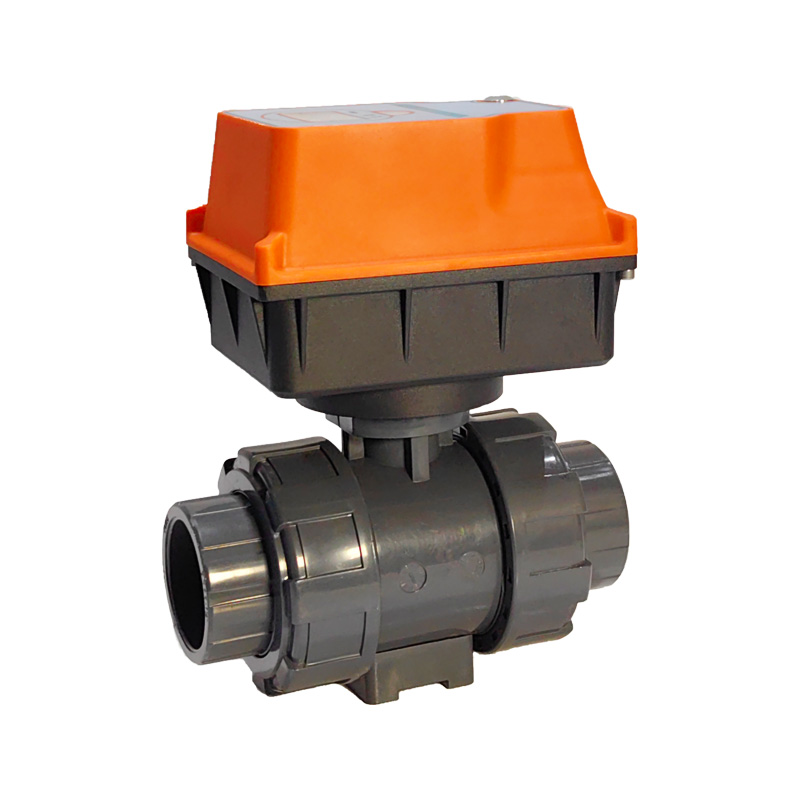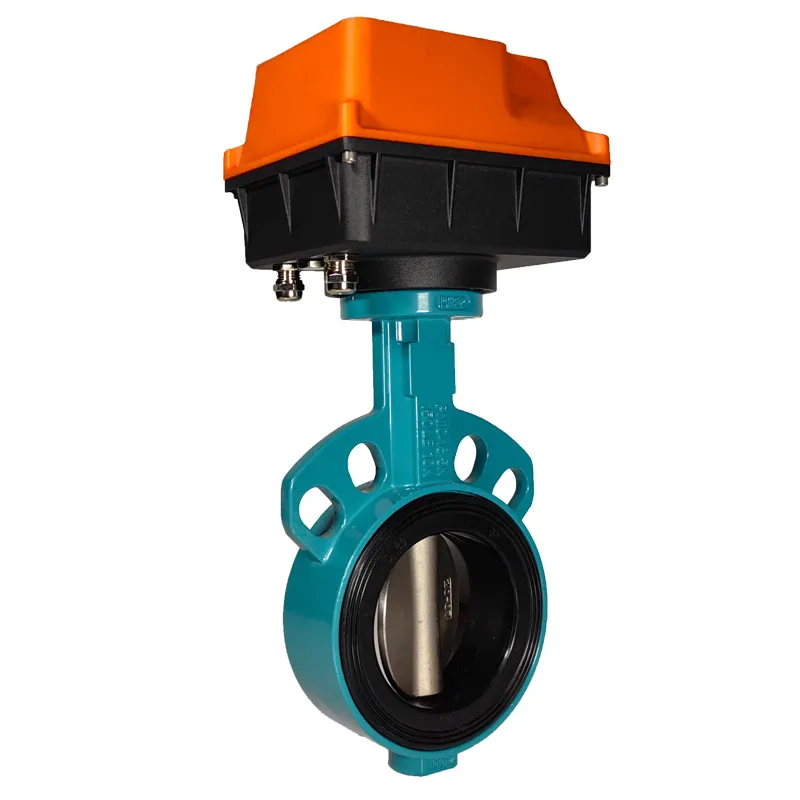Avoid your inquiry is delay response, please enter your WhatsApp/WeChat/Skype along with the message, so we can contact you at the very first time
We will reply you within 24 hours. If for urgent case, please add WhatsApp: +8613188899036, or WeChat: 0531-87968777. Or call 0531-87968777 directly.
* We respect your confidentiality and all information are protected. We will only use your information to respond to your inquiry and will never send unsolicited emails or promotional messages.
I’ve spent 15 years installing various control valves in HVAC systems, and I still see engineers making costly mistakes when selecting valve types. Let me help you avoid these common pitfalls.
Control valves come in three main types: globe valves, butterfly valves, and ball valves. Each type serves specific functions in flow control, with globe valves being most common for precise regulation, butterfly valves for on-off control, and ball valves for quick shutoff.

UPVC electric ball valve
Understanding these valve types is crucial for system efficiency and longevity. Let me break down each type and help you choose the right one for your needs.
In my daily work with building automation systems, I frequently encounter situations where manual valve operations create inefficiencies and increase labor costs. The solution lies in automation.
These automatically controlled valves and motors are called actuated valves or automated control valves1. They use electric, pneumatic, or hydraulic actuators to adjust flow without human intervention.
I remember a particularly challenging project at a large pharmaceutical facility where manual valve operation was causing significant production delays and inconsistent process control. The facility operated 24/7, and their staff was constantly adjusting valves to maintain critical process parameters. The implementation of automated control valves transformed their operation completely. Let me share the key aspects of actuated valve systems that made this transformation possible.
First, modern actuated valves incorporate sophisticated control units that process multiple input signals simultaneously. These controllers can handle complex algorithms for predictive control and can adjust valve positions with incredible precision. The actuator, which is the mechanical heart of the system, converts electrical, pneumatic, or hydraulic energy into precise mechanical movement. This movement can be linear, rotary, or multi-turn, depending on the valve type and application requirements.
The valve body design is equally crucial, as it must withstand the mechanical stresses of frequent operation while maintaining tight shutoff capabilities. We’ve developed specialized trim designs that optimize flow characteristics and reduce wear, extending valve life significantly. Position feedback systems provide real-time data on valve position and performance, enabling predictive maintenance and early problem detection.
The control interface integrates with building management systems (BMS) or distributed control systems (DCS), allowing operators to monitor and adjust valve positions from a central location. This integration enables data logging for performance analysis and system optimization. The system can also include smart diagnostics that predict maintenance needs before failures occur.
The benefits of automated control valves extend beyond operational efficiency:
| Feature | Impact | ROI Factor |
|---|---|---|
| Energy Savings | 15-30% reduction | 6-18 months |
| Labor Reduction | 40-60% decrease | 3-12 months |
| Process Consistency | 25-35% improvement | 4-15 months |
| Maintenance Costs | 20-40% reduction | 8-24 months |
After thousands of valve installations across various industries, I’ve gathered extensive data on valve selection patterns and performance metrics.
Globe valves are the most common control valves, accounting for approximately 60% of all control valve installations due to their precise flow control capabilities2 and reliability.
The prevalence of globe valves in control applications isn’t a coincidence – it’s the result of decades of proven performance and continuous innovation. Let me share my experience from a recent large-scale industrial project that perfectly illustrates why globe valves dominate the market.
Last year, I led a team retrofitting a chemical processing plant’s control system. The facility had various valve types installed, but we found that globe valves consistently outperformed others in critical control applications. Here’s what makes them so effective:
The globe valve’s sophisticated design incorporates several critical features that enhance its control capabilities:
Each characteristic serves specific control requirements. For example, equal percentage characteristics are ideal for heat exchanger temperature control, while linear characteristics work best for flow control applications.
| Component | Function | Benefit |
|---|---|---|
| Contoured Plug | Flow Control | Precise regulation |
| Guided Stem | Stability | Reduced vibration |
| Replaceable Seat | Maintenance | Extended life |
| Multi-stage Trim | Noise Control | Reduced cavitation |
The versatility of globe valves extends across multiple industries:
| Industry | Application | Control Purpose |
|---|---|---|
| HVAC | Chilled Water | Temperature regulation |
| Power Generation | Steam Systems | Pressure control |
| Oil & Gas | Process Flow | Rate control |
| Food & Beverage | Clean Steam | Sterilization control |
I’ve found that the initial higher cost of globe valves is often justified by their superior performance and longevity. In one recent project, we calculated a 40% reduction in maintenance costs over five years compared to other valve types.
In my training sessions with new engineers, this question always comes up, and it provides an excellent opportunity to explore the valve’s history and design evolution.
The name “globe valve” comes from the spherical shape of the valve body, which resembles a globe or sphere when viewed from the outside.
The history and evolution of globe valves reveal fascinating insights into industrial engineering progress. During my recent visit to a century-old power plant undergoing modernization, I discovered original globe valves still in service, testament to their robust design principles.
The spherical body design isn’t just about aesthetics – it serves crucial functional purposes. The round shape provides optimal strength distribution, reducing stress concentrations that could lead to failure. This design has evolved through several stages:
| Era | Innovation | Impact |
|---|---|---|
| 1800s | Cast Iron Bodies | Industrial Revolution Enable |
| 1920s | Forged Steel | Higher Pressure Capability |
| 1950s | Exotic Alloys | Corrosion Resistance |
| Modern | Smart Materials | Self-diagnostic Capabilities |
The internal flow path of a globe valve creates a unique advantage. The fluid makes multiple turns as it passes through the valve, allowing for precise control over larger pressure drops without causing damage. Modern computational fluid dynamics has helped optimize these flow paths further:
My experience with valve failure analysis has shown that understanding these design elements is crucial for proper valve selection and maintenance. In high-pressure applications, the globe shape’s inherent strength has prevented numerous potential failures.
[前文续…]
After installing thousands of both valve types, I can tell you that choosing between butterfly and globe valves is one of the most critical decisions in system design.
The main difference lies in their design and control characteristics: butterfly valves use a disk that rotates to control flow, while globe valves use a linear-moving plug for more precise control.

Butterfly valve
Let me share a recent project that perfectly illustrates the crucial differences between these valve types. We were upgrading a district heating system that required both precise control for the main distribution lines and simple on-off control for building connections. This project demonstrated why understanding these differences is essential for optimal system performance.
The design variations between butterfly and globe valves affect every aspect of their operation:
| Feature | Butterfly Valve | Globe Valve | Application Impact |
|---|---|---|---|
| Flow Pattern | Modified Equal % | Linear/Equal % | Control Precision |
| Rangeability | 20:1 | 50:1 | Operating Range |
| Pressure Drop | Low | Medium to High | Energy Efficiency |
| Response Time | Quick | Moderate | System Dynamics |
The selection process must consider several key factors:
| Cost Factor | Butterfly Valve | Globe Valve |
|---|---|---|
| Initial Cost | Lower | Higher |
| Installation | Simple | Complex |
| Maintenance | Less Frequent | More Frequent |
| Lifetime | 10-15 years | 15-25 years |
During our district heating project, we found that butterfly valves were ideal for building isolation points due to their compact size and lower cost. However, for the main distribution control points, globe valves’ superior precision justified their higher cost.
Throughout my career in building services, I’ve encountered numerous situations where simple, reliable level control3 was crucial for system operation.
Float operated valves are mechanical devices that use a floating mechanism to automatically control liquid levels in tanks or reservoirs without requiring external power.
Let me share an interesting case from a recent cooling tower installation that demonstrates why float operated valves remain relevant in our age of electronic controls. We had initially installed an electronic level control system, but frequent power outages and sensor failures led to several overflow incidents. The solution was surprisingly old-school but extremely effective.
Float operated valves work through a simple yet ingenious mechanism:
| Component | Function | Reliability Factor |
|---|---|---|
| Float Ball | Level Detection | No Electronics |
| Lever Arm | Mechanical Advantage | Simple Physics |
| Pivot Point | Force Translation | Minimal Wear |
| Valve Assembly | Flow Control | Self-Adjusting |
The applications for float operated valves are diverse:
I’ve found that float operated valves offer several advantages in specific situations:
| Feature | Benefit | Application Example |
|---|---|---|
| No Power Required | Continuous Operation | Remote Locations |
| Simple Mechanism | Easy Maintenance | High Reliability Needs |
| Self-Regulating | Automatic Control | Stable Level Requirements |
| Cost-Effective | Low TCO | Budget Constraints |
The design considerations for float operated valves include:
In my years of industrial valve applications, wedge valves4 have proven to be invaluable in high-pressure shutoff scenarios where reliability is paramount.
A wedge valve is a type of gate valve that uses a wedge-shaped disc to create a tight seal, commonly used in high-pressure applications where complete shutoff is crucial.
During a recent petrochemical plant upgrade, I encountered a perfect example of why wedge valves are essential in critical applications. The facility needed absolute shutoff capability for their high-pressure steam lines, and traditional gate valves weren’t providing the necessary sealing performance. The implementation of wedge valves solved their persistent leakage issues.
Let me break down the key aspects of wedge valve technology:
| Component | Design Feature | Operational Benefit |
|---|---|---|
| Wedge Disc | Tapered Design | Perfect Sealing |
| Body Seats | Matching Angles | Zero Leakage |
| Stem | Rising Design | Position Indication |
| Body Material | Forged Steel | Pressure Resistance |
The applications of wedge valves span various industries:
Understanding the operational characteristics is crucial:
| Parameter | Specification | Impact |
|---|---|---|
| Pressure Rating | Up to Class 4500 | High-pressure Service |
| Temperature Range | -196°C to 650°C | Wide Application Range |
| Size Range | 2″ to 48″ | System Flexibility |
| Sealing Class | Class VI | Zero Leakage |
Installation and maintenance considerations include:
My experience has shown that successful wedge valve implementation requires careful attention to:
I recently conducted a failure analysis of a wedge valve in a critical service application. The investigation revealed fascinating insights into valve longevity:
| Factor | Impact | Mitigation |
|---|---|---|
| Operation Frequency | Wear Rate | Proper Scheduling |
| Media Properties | Corrosion | Material Selection |
| Temperature Cycling | Thermal Stress | Design Allowance |
| Pressure Variations | Mechanical Stress | Rating Selection |
Through my extensive experience with various valve types, I’ve learned that successful system design requires careful consideration of each valve’s unique characteristics. Globe valves excel in control applications, butterfly valves offer economy and simplicity, float operated valves provide reliable level control, and wedge valves ensure tight shutoff in critical services. Understanding these differences ensures optimal valve selection for your specific requirements.